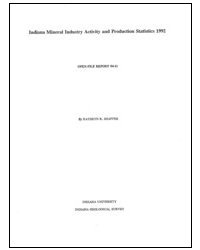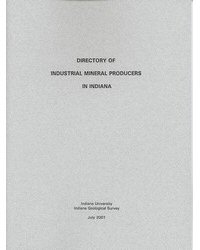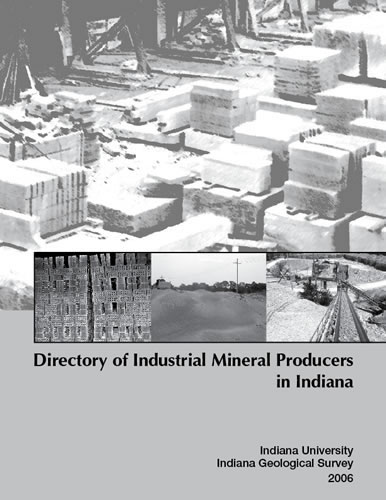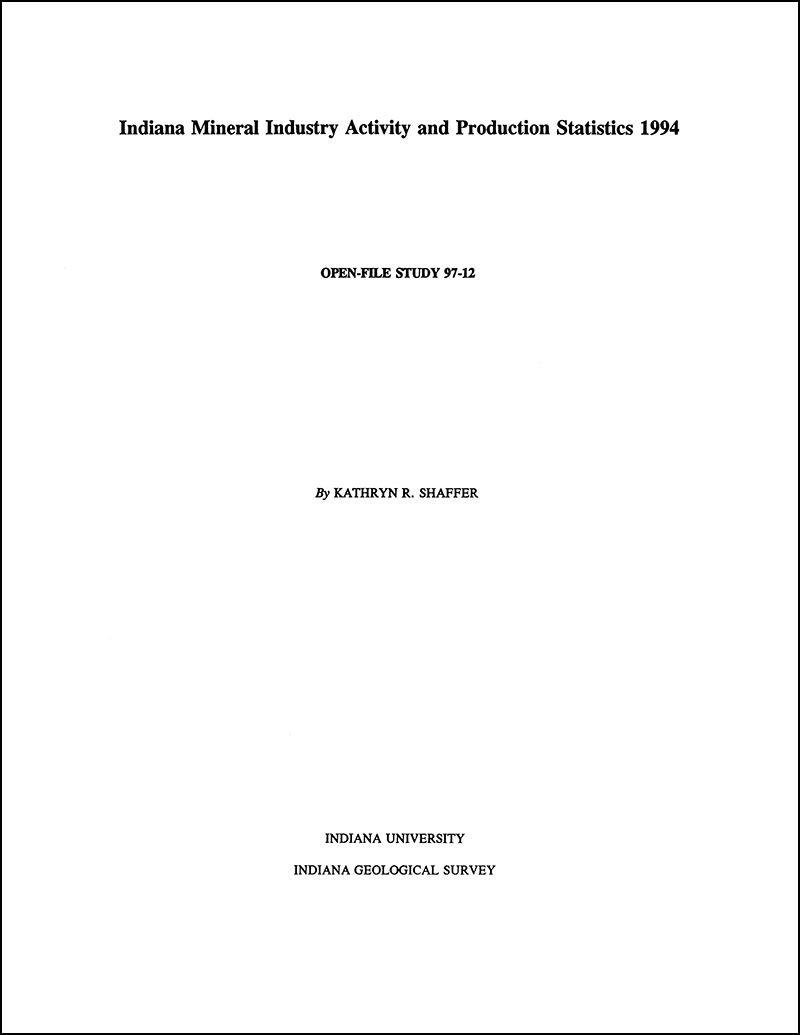INTRODUCTION: Indiana produces a variety of fuel and nonfuel mineral commodities. The fuels coal, crude oil, and natural gas, are used in part to power other facets of the state's economy. Many of the nonfuel commodities produced are used in some aspect of the construction industry. Cement is used in mortar and concrete and for highways and buildings; common clay and shale primarily in the production of cement, brick, concrete blocks, and tiles; crushed stone primarily for aggregate, concrete manufacture, and cement; dimension limestone for building stone and flagstone; sandstone for building stone and rubble; gypsum for wallboard and cement; and sand and gravel primarily for concrete aggregate, roadbase and stabilization, and fill. Other commodities are used for a variety of purposes. Ball clay is used primarily for absorbents and filler; lime primarily in the steel industry; peat primarily for soil improvements and earthworm culture; and industrial sand for refractory purposes, as well as molding, blasting, and glass. In addition, gemstones freshwater pearls and occasionally garnets are produced in Indiana. Only five of Indiana's 92 counties did not produce at least one mineral commodity during 1992. Commodities produced in Indiana during 1991 and 1992, as well as quantity and value of that production, are listed in publication. During 1992, total Indiana mineral production including fuels and nonfuels was valued at $1.2 billion, an increase of 4.1 percent over 1991 reported value but a decrease of 8.9 percent from 1990 reported value. Industrial mineral production was valued at an all-time high of $477 million, largely because of marked increases in the production of construction materials due to improvements in the housing industry, particularly sand and gravel. The state ranked twenty-second nationally in total value of industrial minerals produced. The value of each of the fuels registered a small to moderate decrease; the total value of fuels produced decreased 3.1 percent from 1991. The nation's economy was expected to continue to improve during 1993. Indiana fared better than much of the nation during this past recession and it is expected that government infrastructure spending will help Indiana businesses continue to grow in the near future.
Shaffer, K. R. 1994, Indiana mineral industry activity and production statistics 1992: Indiana Geological Survey Open-File Study 94-11, 17 p., 3 fig.
Notes: Publications in the Indiana Geological Survey Open-File series have been inconsistently named using a variety of series titles including "Open-File Report," "Open-File Map," and "Open-File Study." Prior to 1994, a publication in this series was generally referred to as an "Open-File Report" (but not always). To help reduce confusion created by these inconsistencies, the IGS now refers to every publication in the Open-File series as an "Open-File Study." To be entirely correct in writing a bibliographic reference for a publication, one should use the series name and number that appears on the publication itself.
You may also like:
Keywords: industrial minerals, statistics, gas, petroleum, cement, brick, coal, oil, concrete, clay, shale, dimension stone, flagstone, gypsum, sand and gravel, sand, lime, peat
Can't find what you're looking for? Feel free to contact us directly:
Indiana Geological and Water Survey
1001 E. 10th St.
Bloomington, IN 47405
812-855-7636 (phone)
812-855-2862 (fax)
IGWSinfo@indiana.edu
IGS Return Policy
- Original sales receipt required.
- Returns accepted within 30 days of purchase date.
- Refund will be issued by the same method of payment as purchased.
- Products must be returned in the same new condition as purchased.
- Refunds on custom orders and digital products are NOT allowed.
- Customers are responsible for paying shipping costs to return products.
Updated 8/19/2020








